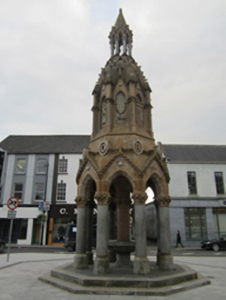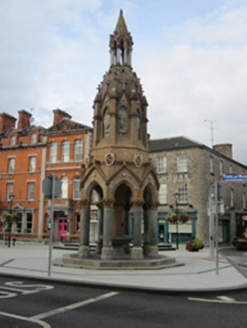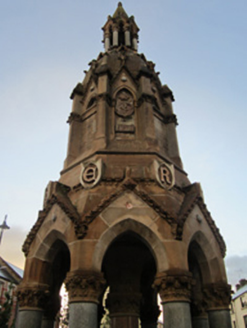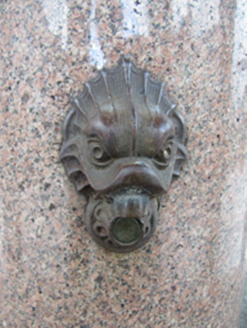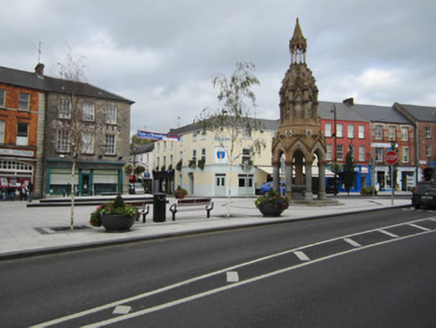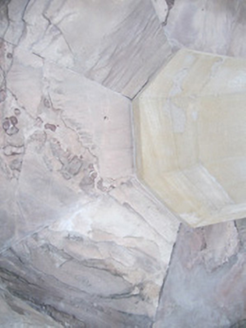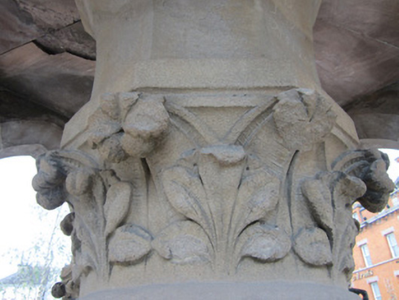Survey Data
Reg No
41303115
Rating
Regional
Categories of Special Interest
Architectural, Artistic
Original Use
Monument
In Use As
Monument
Date
1875 - 1880
Coordinates
267271, 333785
Date Recorded
04/10/2011
Date Updated
--/--/--
Description
Freestanding openwork memorial fountain, erected c.1876, comprising stepped octagonal stone plinth surmounted by eight grey marble columns with polygonal splayed carved stone bases and foliate capitals, supporting carved sandstone superstructure comprising pointed arches with chamfered reveals, with continuous triangular-arch hood-mouldings with carved foliage detailing. Carved shields over arches each carrying letters which together read 'ROSSMORE'. Above this is arcade of pointed arches with moulded surrounds and containing heraldic devices and plaques, flanked by square-plan piers with pyramidal caps, having triangular-arch hood-mouldings matching those below, with carved foliage detailing, carved finials to apexes. Monument topped by dome surmounted by eight grey marble columns with polygonal splayed carved stone bases and carved foliate capitals, surmounted by sandstone spire. Interior of monument has moulded grey marble base supporting grey marble fountain-bowl, over which is pink granite column having foliate capital, and with copper animal mask spouts. Vaulted ceiling to interior, and marble and limestone flag flooring.
Appraisal
This monument is a very attractive and ornate piece of street furniture, extravagant in its artistic design and impressive as a feat of engineering. Typical of the ornamental extravagance lavished on public spaces by the Victorians, the structure commemorates Henry Westenra, fourth Baron Rossmore who died as the result of a hunting accident at Windsor Castle, England, in 1874 at the age of 23. The monument was erected in 1876 on the site of the ancient stone cross, which was moved. Despite some corrosion to the sandstone shields and the fountain no longer functioning, the structure today serves a handsome set-piece for the historic Diamond townscape and remains an interesting and integral part of, and synonymous with, the built heritage and physical identity of Monaghan. The variously coloured parts of the structure are visually interesting.

